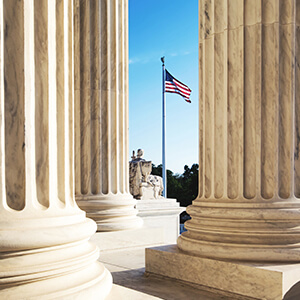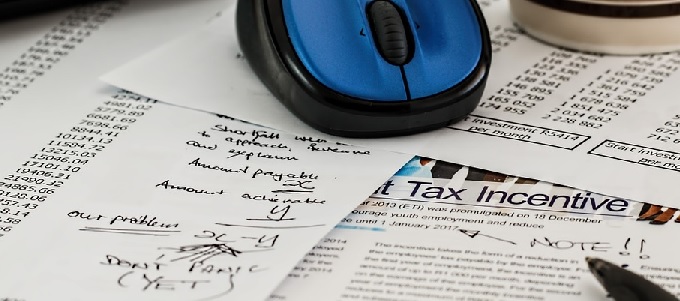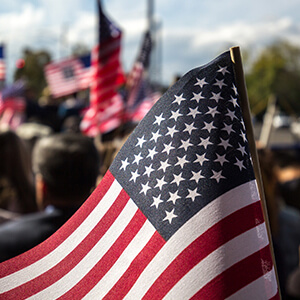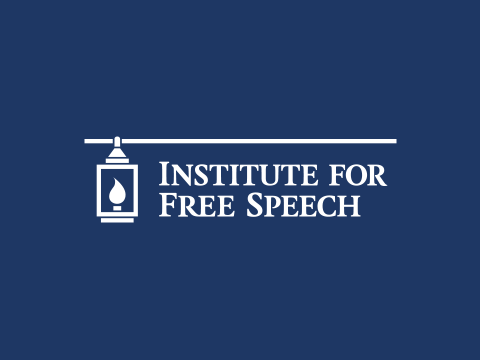The Badger Herald reports that professor Ken Goldstein is reprising his role from the late ’90s on behalf of the Brennan Center, by tracking and analyzing advertisements in the 2008 election cycle.
This time the work is being dubbed the "Wisconsin Advertising Project" and is being funded by the Joyce Foundation. But already pro-"reform" advocates are seizing on the upcoming study as a useful tool to "prove" the existence of "phony issue ads."
Due to the dubious past of the previous issue ad study, this latest effort will undoubtedly deserve close scrutiny.
In 2003, David Tell, writing in the Weekly Standard, exposed how "reform" advocates carefully spun Goldstein’s study into political ammunition.
BCRA supporters used the study, "Buying Time", to "prove" that the electioneering communications provision in BCRA would only "affect 7 percent of ads categorized as genuine issue advocacy."
But, according to Tell, "A research assistant named Luke McLoughlin ran appropriate calculations through the Goldstein database and repeatedly produced a much higher and thus politically inconvenient figure: 38.5 percent. A professor independently commissioned by Brennan to work with the database arrived at an eerily similar conclusion: 40 percent. As late as January 2001, eight months after "Buying Time 1998" was published and widely circulated, no one in the Brennan Center’s ambit had yet found a way to budge this number."
Tell reports that the Brennan Center did not "ever publicly express so much as a hint of doubt about the validity or significance of Krasno’s original 7 percent analysis. Quite the contrary: In mid-March 2001, barely two months after Rosenkranz had privately dismissed that analysis as "flat-out false"–and, not incidentally, immediately in advance of a crucial Senate debate on the Snowe-Jeffords Amendment–Brennan issued a splashy open letter citing "Buying Time 1998," and nothing else, as proof that the measure was constitutional. "This empirical evidence demonstrates that the Snowe-Jeffords criteria are not ‘substantially overbroad,’" the letter proclaimed–on the authority of 88 signatory "constitutional scholars" led by luminaries like Ronald Dworkin and Norman Ornstein."
In McConnell v. FEC, the case examining the Constitutionality of BCRA, the McConnell plaintiffs called professor James Gibson to analyze the results of the Buying Time study.
According to Tell, Gibson found that "Brennan’s 1998 advertising database… was ‘riddled with internal inconsistencies and errors.’ Though multiple iterations of that database were preserved on the disks he’d been given, Gibson was able to replicate ‘virtually none’ of the results ‘Buying Time 1998’ had claimed to derive from it. Gibson did manage to trace the origin of one such result, however–the 7 percent figure that had so irked and mystified Krasno’s officemates. The numerator was the expected one: genuine issue-ad broadcasts that the Snowe-Jeffords 60-day blackout would have unfairly swallowed up. But the denominator was an apples-and-oranges anomaly: all issue-ad broadcasts for the entire calendar year… Retabulated in the proper fashion, so far as Gibson could determine, "Buying Time 1998"’s results actually meant that a shockingly large number of the issue ads silenced by Snowe-Jeffords–44.4 percent of them–wouldn’t be "shams" at all."
But that was not all. Tell writes, "Gibson was delivered a small sample set of the primary-source material used by Kenneth Goldstein’s Arizona State University students: 25 of the 1998 storyboards, matched up with the "coding sheets" on which those students had registered opinions about the presence or absence of an "electioneering" purpose in the broadcasts. Chancing to check the coding sheets against related entries in different versions of the 1998 database, Gibson established, to his amazement, that eight of the original student scorings, almost a third, had been altered after the fact. At some point during the preparation of "Buying Time 1998," probably in late January 2000, someone had accessed the Goldstein/Brennan computer files and switched at least eight ads, representing a significant chunk of the study’s ostensible broadcast-airtime baseline, out of the "genuine" category and into the "sham." The "sufficiently powerful boost to the reform movement" referred to in Krasno’s Pew grant proposal, and provided by means of his creative 7 percent construction, had itself been boosted rather powerfully–and was phonier, therefore, than even Joshua Rosenkranz had feared."
Tell continued, "Correcting for Krasno’s numerator/denominator subterfuge and for the demonstrable manipulation of Brennan’s underlying data, "Buying Time 1998" should more honestly have reported, Gibson advised the McConnell judges, that the vast majority of political advertisements likely to be kept off the air by the Snowe-Jeffords Amendment, 64 percent of them at minimum, would be perfectly unobjectionable, altogether genuine issue broadcasts. Snowe-Jeffords, it appeared, was unconstitutionally "overbroad," just as those "sky is falling" critics had alleged–to an almost unimaginable, spectacular extent…
No one representing the Brennan Center acknowledged responsibility for the ex post facto score-switchings Professor Gibson had uncovered in the 1998 advertising database–or claimed to know who’d done the deed. But Gibson had also identified six instances of equivalent corruption in the "Buying Time 2000" computer disks. And Kenneth Goldstein, many reluctant hours into a day-long deposition last October 24, finally fessed up to those. Three of the changes were made in mid-March 2001–while Goldstein was on vacation, standing in a Florida airport. His cell phone rang. The "Brennan Center called me up" and "asked me to give another assessment of three ads," he recounted. "And I gave them that assessment," overruling the judgments of student researchers who had examined the storyboards. Why the urgency, an attorney for the McConnell plaintiffs wondered? "I believe that was the time McCain-Feingold was being debated in the Senate," Goldstein remembered. "Brennan wanted to be able to write a report or have a press release . . . and talk about the 2000 data."












